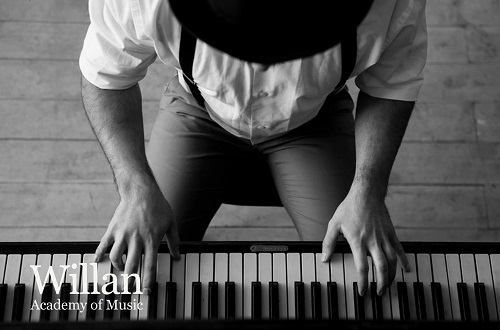Home > Piano Lessons > Blog
My Boogie Woogie Piano History
I was a 17-year-old recruit in the US Army Air Corps in 1945 when I heard this exciting music for the first time.
One of my buddies was a truly expert piano player who enjoyed showing off his skill in what we called “The Rec Room” where we often spent what leisure time the Army gave us in basic training.
Wow! He played so wonderfully! I was fascinated by the seemingly endless flow of delightful and dynamic sounds which he called Boogie Woogie.
Although the origin of the term Boogie Woogie is unknown, several sources suggest that the words trace back to the word “boogie” in the late 1920s which were used for rent parties as early as 1913.
Its modern-day spelling is usually thought to have been first used in the titles of both issues of “PineTop’s Boogie Woogie” which Clarence “Pinetop” Smith recorded before his untimely death in the late 1920s.
Opinions and theories vary widely regarding the origin of the words for this style of music. Some of the linguistic phrases with African roots such as “boog” or “Boogie” both of which mean to beat like in beating a drum are probably the best guess. In any event, the music most certainly originated among newly emancipated African Americans.
The United Sates was a segregated society in those days with Racial discrimination a common event in the life of black people. During this period in America, some companies produced phonograph records which were clearly labeled as Race Records which were marketed almost exclusively to black communities. Americans.
However, many people of all groups enjoyed the music and were buying the 33, 45 and 78rpm recordings which were state of the art products at the time. My first purchases included the piano duets of Pete Johnson and Albert Ammons, especially such delightful pieces as “Sixth Avenue Express” which my old Army pal had played again and again at my request.
Although a large number of black piano players were active in America at the time, Pete Johnson and Albert Ammons, along with Meade Lux Lewis are usually considered the major players in bringing Boogie Woogie to its high level of popularity during the years of World War 2– its golden years. For that matter, most of the well known white musicians of that period included at least one piece of it in their recordings.
A few white performers produced some truly good work. Freddie Slack and Will Bradley, for instance, produced a wonderful piece of music entitled “Down the Road a Piece” which I think is a masterpiece. However, the efforts of most of the major white musicians, who earned much more money, usually struck me as attempts to copycat the black musicians whom, I thought, produced more attractive and creative work while receiving much less money for doing it.
Keep reading: “Interesting Facts About The Piano That You May Not Know”>>
Read on: “Inspiration from the Life of Ludwig van Beethoven”>>
For more questions, contact us at info@willanacademy.com or 646-838-3990. Willan Academy of Music offers violin lessons, guitar lessons, and more in NYC, including Manhattan, Brooklyn, and Queens.

Office:
244 Madison Avenue Suite 171
New York, NY 10016
Phone: 646-838-3990
E-mail: info@willanacademy.com
The post My Boogie Woogie Piano History appeared first on Willan Academy Of Music.




